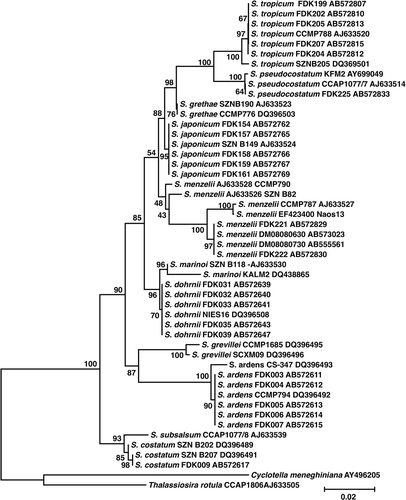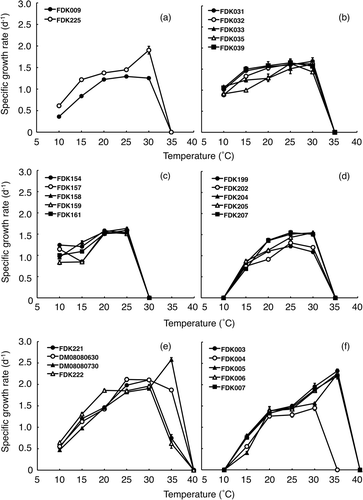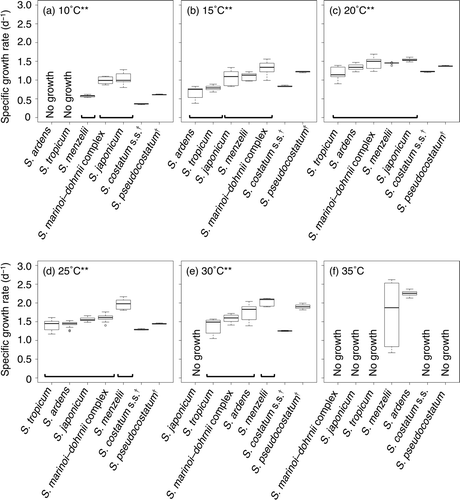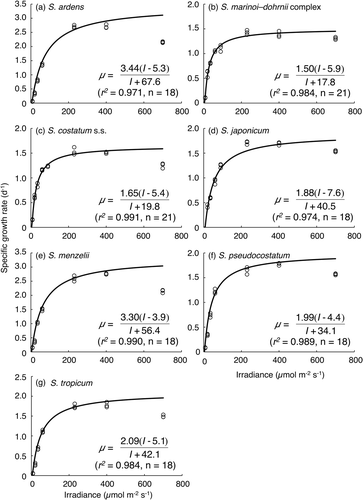Figures & data
Fig. 1. Neighbour-joining (NJ) phylogram inferred from partial LSU rDNA sequences (795-bp long including alignment gaps) from 48 strains of 11 morphologically distinct taxa within Skeletonema with Cyclotella meneghiniana and Thalassiosira rotula as outgroups. NJ trees (Saitou & Nei, Citation1987) were constructed using the genetic distance estimated by the Kimura's two-parameter method (Kimura, Citation1980). Alignment gaps were excluded in the estimation of genetic distance, but the gaps were included in the pair-wise comparisons. Bootstrap values were calculated with 1000 replicates under the same settings as in the NJ analysis.

Table 1. Isolated Skeletonema strains, strain ID, GenBank accession number, and date when each strain was isolated from Dokai Bay.
Fig. 2. Specific growth rates for seven species of Skeletonema at various temperatures for (a) S. costatum s.s. (FDK009) and S. pseudocostatum (FDK225), (b) the S. marinoi–dohrnii complex, (c) S. japonicum, (d) S. tropicum, (e) S. menzelii and (f) S. ardens. Error bars indicate ± standard deviation (n = 3). Strain identities are indicated throughout (see ).

Fig. 3. Box plots of specific growth rates for seven Skeletonema species at six temperatures: (a) 10, (b) 15, (c) 20, (d) 25, (e) 30 and (f) 35°C. Data for all strains of each species (see ) were pooled and plotted at each temperature. Asterisks beside the temperature and lines under plots indicate significant differences of specific growth rate among the tested species (Kruskal–Wallis test, P < 0.01; Steel–Dwass test, P < 0.01). Skeletonema costatum s.s. and S. pseudocostatum were excluded from the statistical tests, since their specific growth rates were obtained from only one strain.

Fig. 4. Specific growth rates of strains of seven Skeletonema species as a function of irradiance. Curves were fit to a hyperbolic equation (see text for details). (a) S. ardens, (b) S. costatum s.s. (c) the S. marinoi–dohrnii complex, (d) S. japonicum, (e) S. menzelii, (f) S. pseudocostatum and (g) S. tropicum.
